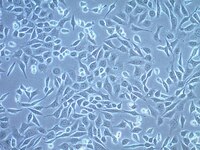SCC145 Sigma-AldrichID8 Mouse Ovarian Surface Epithelial Cell Line
Recommended Products
Overview
| Replacement Information |
|---|
| References |
|---|
| Product Information | |
|---|---|
| HS Code | 3002 59 00 |
| Biological Information | |
|---|---|
| Cell Line Type |
|
| Physicochemical Information |
|---|
| Dimensions |
|---|
| Materials Information |
|---|
| Toxicological Information |
|---|
| Safety Information according to GHS |
|---|
| Safety Information |
|---|
| Storage and Shipping Information |
|---|
| Packaging Information | |
|---|---|
| Material Size | ≥1X10⁶ cells/vial |
| Transport Information |
|---|
| Supplemental Information |
|---|
| Specifications |
|---|
| Global Trade Item Number | |
|---|---|
| Catalog Number | GTIN |
| SCC145 | 04054839501937 |
Documentation
ID8 Mouse Ovarian Surface Epithelial Cell Line SDS
| Title |
|---|
ID8 Mouse Ovarian Surface Epithelial Cell Line Certificates of Analysis
| Title | Lot Number |
|---|---|
| ID8 Mouse Ovarian Surface Epithelial Cell Line - 3268380 | 3268380 |
Data Sheet
| Title |
|---|
| ID8 Mouse Ovarian Surface Epithelial Cell Line |








